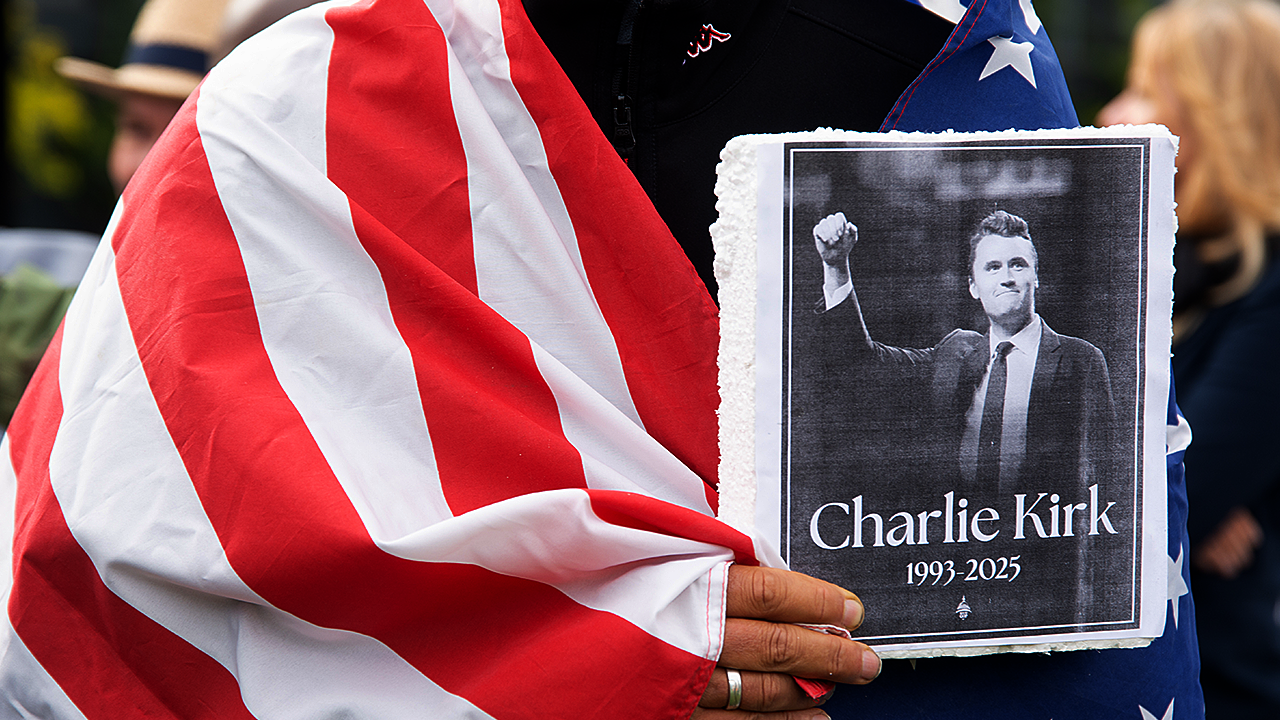Copyright National Geographic

It’s 11am and I’m having coffee. But as this is a ‘Belfast coffee’, it’s a cream-topped cold brew laced with a shot of poitín, served at the capital city’s snug-boothed 19th-century Garrick pub. “It’s the sort of thing you used to get from your backcountry man,” says my jovial guide, Ali McDevitt, brushing cream from his whiskers. Ireland’s moonshine, poitín, was outlawed in the 1600s, but people continued to make the unaged spirit at home — using potatoes or grains and pot-stills — and it was finally legalised in 1997. “Poitín’s had a big revival in recent years, creeping into cocktails,” says Ali. “I even saw it in my local Tesco the other day.” This smoky, velvety variant on Irish coffee is just one educational indulgence I sample during my morning with Belfast Taste & Tour. The first outfit of its kind in Northern Ireland, it’s conjured numerous inventive excursions since its 2014 debut — last summer it launched after-hours entry to the Titanic Museum, complete with historically inspired cocktails. Its original four-hour exploration of Belfast’s best indie food outlets has taken me from landmark deli to boutique chocolatier and into Victorian-era St George’s Market. A microcosm of Northern Ireland’s rudely healthy food culture, here I try oyster shucking, artisan pastries and a cuppa from SD Bell & Co, Ireland’s oldest tea importers and coffee roasters. “Twenty years ago, people would ask me where to eat and I’d be scratching around,” says Ali. “But now we’re opening places every week.” I’ve heard about a new hotel in Carnlough, an hour north of the city, and the following day I drive a road so coast-hugging my steering wheel becomes flecked with sea spray. The village’s 19th-century Londonderry Arms was reborn as The Harbourview Hotel in June 2025 after a subtle £1.5m overhaul, but its smartly reupholstered chairs and carefully chosen antiques suggest it’s been just-so forever. Previous owners include Sir Winston Churchill, as well as the Marchioness of Londonderry, and the 35-bedroom inn now pitches itself as ‘Ireland’s first whiskey hotel’. “We’re still doing Irish pub-style food,” says sharp-suited general manager Paul Truscott. “But we plan to tweak the menu with whiskey recipes. We’ve already got over 200 bottles in the bar,” he adds, showing me a standout 46-year-old single malt from Antrim’s Bushmills Distillery, which sells for £800 a shot. Upstairs, where the property adjoins the village’s still-tumbledown parochial hall, Paul points out the barrels ageing what will become The Harbourview’s house whiskey. “Once we’ve finished renovating up here,” he says, “this will become a space for music, special events and tastings.” For now, I head downstairs for a whiskey flight under a watchful oil painting of the current owner’s Irish wolfhound. A standout Limavady single malt leaves a caramel-banana hum on my tongue; perfect insulation for the coastal squall that’s blown up outside. Antrim showcases its wild contrasts in fleeting weather windows. Burrowing inland through tree tunnels, over sheep-studded moorland, I drive to Broughgammon Farm. The rain eases for a walk with the sensibly wax-jacketed Becky Cole, who runs the 50-acre estate with her husband Charlie and his parents. “I’m a herbalist; I never thought I’d end up meat farming,” she says. “But when we brought the farm in 2011, we took in male goats that the dairy industry puts down at birth and started producing kid goat meat.” It didn’t take long for locals to acquire a taste for ‘billy burgers’, and today Broughgammon’s ethical produce includes free-range rose veal, pasture-raised pork and lamb. As we tour the apple orchards and fields, Bluey the sheepdog in orbit, Becky plucks hawthorn berries from wild hedgerows. “I infuse vinegar or ketchup with them,” she says. “Great for heart health.” Along with offering courses in everything from butchery to mince-pie making, the farm hosts foraging tours — where Becky teaches visitors how to harvest nettles for a nutrient-rich tea, or the almond-scented wildflower meadowsweet, used for jams. There are also organic vegetables, grown in rotation with free-range pigs “who do the basic ploughing work”. All of which feature in the cosy barn cafe-shop, where farm eggs, preserves and charcuterie line the shelves. A coriander-spiced courgette pickle is a lively companion to a flaky sausage roll and tangy, whole-baked raw milk cavanbert cheese. Like every self-respecting Antrim cafe, Broughgammon’s sourdough comes from Ursa Minor, a bakery in the neighbouring town of Ballycastle. Started as a pop-up by husband-and-wife team Dara and Ciara Ohartghaile in 2014, it’s burgeoned into a dynamic community hub. At the bakery-cafe — heaving, even on a Tuesday morning — I find well-worn cookery books to leaf through, doorstop sandwiches to deliberate over and a deli showcasing Irish indie producers. Taking a seat at a communal table, I sample a buttery-yet-featherlight Danish pastry topped with Irish blueberries and lemon verbena yoghurt: an experience that’s both wholesome and decadent. “Our fruit is really seasonal,” says manager Blaithnàid, Dara’s sister. “People come in asking: is it time yet?” There’s high demand for their patisseries, perhaps topped with rhubarb or the tropical-tasting sea buckthorn berries, whose arrival signals the start of summer in the dunes of nearby White Park Bay. The latest addition to Ursa Minor’s constellation is a sparkling new bakery school and community centre. Housed in the Yarn, a former bank, its vault is now used to store the kitchen garden produce grown out back. “If you’re not a pub drinker, Ballycastle didn’t offer much of an evening,” says Blaithnàid. And so came Yarn’s programme of film screenings, cookery classes and pizza nights — for the latter, they were given tips by the team at Igloo, a feted pizza van in the village of Portrush. “There’s space for everyone, even if you’re doing similar businesses — we’re all rooting for one other.” Further inland, where Antrim’s basalt backcountry rises to its westerly limits at Mount Binevenaugh, I find ivy-covered Broglasco Farm, home to Broighter Gold Rapeseed Oil. Named after the legendary trove of gold unearthed on the property in 1896 — now on display in Dublin’s National Museum of Ireland — its oil, a similar hue, has also proved a valuable resource. “I’d run out of olive oil,” says its smiling founder, Leona Kane. In stepped her husband Richard, a sixth-generation grain farmer, with the idea to try using unfiltered cold-pressed rapeseed oil. “We were producing it to create biofuel,” Leona continues. “I was horrified. But it cooked my steaks perfectly, with none of olive oil’s smoke or bitter aftertaste.” The couple refined the recipe and, with its high burn point and omega nutrients, Broighter Gold’s fans now include chef James Martin. In the farm’s tasting room I dip bread into oils richly flavoured with basil, truffle and chilli — but even the unadulterated variety is surprisingly light and nutty. Leona explains that in 2012 Broighter Gold became Northern Ireland’s first Économusée: part of an international network of living museums, founded in Canada. “It’s a way to try and encourage people to explore Antrim,” she says, “beyond the Giant’s Causeway.” Fifteen miles north, along that rugged, ocean-buffeted coast, I find more treasure at The Chocolate Manor, which offers hands-on workshops at its modest Main Street premises in the town of Castlerock. There’s locally roasted Causeway Coffee; gin from Basalt Distillery; whiskeys galore; and jams from Dundarave Estate — all ingredients to include in indulgent truffles. Owner Geri Martin sets me to work in her swish kitchens, tempering Callebaut couverture chocolate, to which I add rum created by local celebrity chef Paula McIntyre plus Mussenden Sea Salt that’s harvested off Castlerock Beach. “I wanted to showcase local products,” says Geri, who was inspired to retrain after taking a chocolate-making class. Since leaving her public sector career in 2012, she’s made chocolates for Queen Elizabeth II’s Platinum Jubilee and a newly crowned King Charles. “Honestly,” she says, shaking her bob-cut hair, “when I began making truffles in my home kitchen, I never believed I’d end up here. Back then, I was one of Northern Ireland’s only chocolatiers.” Some two hours later, I leave with two boxes of remarkably refined truffles — honey-sweet rum and raisin and some salted caramel, which taste like a grown-up version of a Caramac bar. Along with my prized creations, I emerge with a newfound appreciation of Northern Ireland’s chocolate heritage. “Sir Hans Sloane — who’s credited with the Cadbury recipe — came from Killyleagh, south of Belfast,” says Geri, with a wink. “So, you could say the Irish invented chocolate.”



